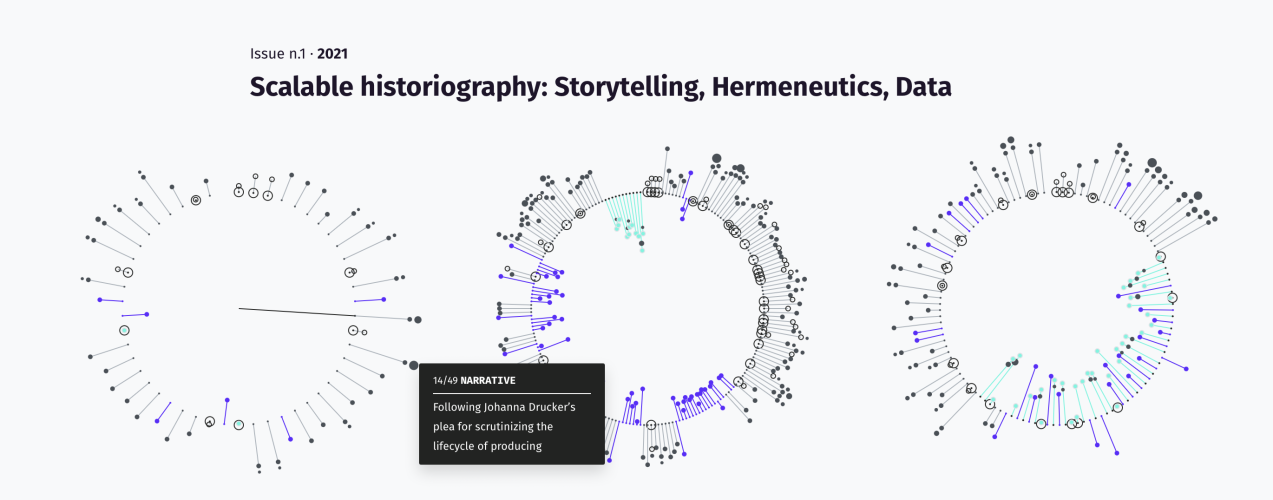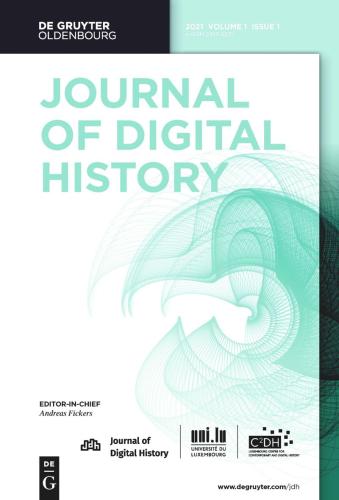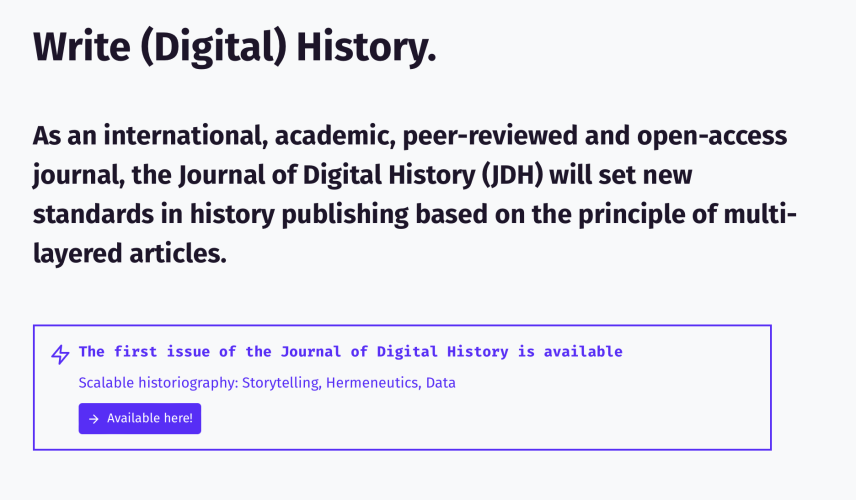Innovating for the future of scholarly publications in history
The Journal of Digital History
One of the key missions of the C²DH is to examine the consequences of the digital turn for historical research in a critical, experimental and interdisciplinary way and to use its findings to devise new practices and research tools. The C²DH has harnessed the potential of digital technologies to create innovative digital scholarly publications as a means of sharing and promoting the results of its research.
In 2021, the centre established a partnership with academic publisher De Gruyter to develop these new concepts for scholarly publications, leading to the launch of the Journal of Digital History (JDH) with De Gruyter Oldenbourg.
The JDH was developed via a co-design process, with both teams creating a publication platform from scratch, testing multiple ideas and progressively moving into the development of the new journal.
The journal is intended to serve as a forum for critical debate and discussion in the field of digital history by offering an innovative publication platform and promoting a new form of data-driven scholarship and of transmedia storytelling in the historical sciences. As an international peer-reviewed open access journal, the JDH sets new standards in history publishing based on a novel multi-layered approach. Each article includes:
- a narration layer involving transmedia storytelling;
- a hermeneutic layer exploring the methodological implications of using digital tools and data;
- a data layer providing access to data and code by means of a professional infrastructure. A key tool for this layer will be code notebooks.
The Fingerprint
Another innovation reflecting this innovative approach is the fingerprint, an unique identifier for each article.
It consists of the following elements:
- the dotted circle represents the total notebook
- inside the circle is the hermeneutic layer (in teal), and outside the narrative layer (in black).
- code cells are shown in purple.
- circles around the notebook edge indicate chapter headings, and smaller circles further away from the notebook edge indicate subchapter headings.
- additional dots on top of each line indicate how many references are used.
- users can hover over a cell to read the first few words and click to be redirected to the selected cell.
The team at the C²DH
The JDH is developed and supported by the C²DH team with wide-ranging expertise (in alphabetical order): Robert Beta is a Systems Administrator at the C²DH. Frédéric Clavert is Assistant Professor in Contemporary History and JDH Managing Editor at the C²DH. Ori Elisar is a User Experience Designer at C²DH. Andreas Fickers is Director of the C²DH and Editor-in-Chief of the JDH Elisabeth Guerard is a Developer at the C²DH. Daniele Guido is a Developer and the Lead Designer at the C²DH. Andy O’Dwyer is the Head of the DH-Lab at the C²DH. Mirjam Pfeiffer is a User Experience and User Interaction Designer at the C²DH. Lars Wieneke is Head of Digital Research Infrastructure at the C²DH.

The team at De Gruyter
Bettina de Keijzer is a Senior Product Manager for Digital at De Gruyter. Florian Hoppe is a Journals Manager in Humanities and Law at De Gruyter. Rabea Rittgerodt is an Acquisitions Editor in History at De Gruyter. Charlott Schönwetter is a Journals Editor at De Gruyter. Katharina Zühlke is a Product Marketing Manager at De Gruyter.




